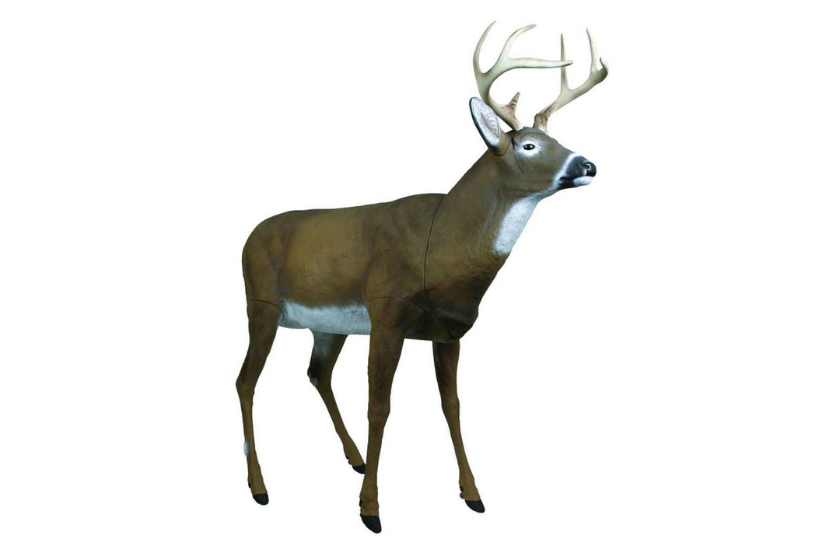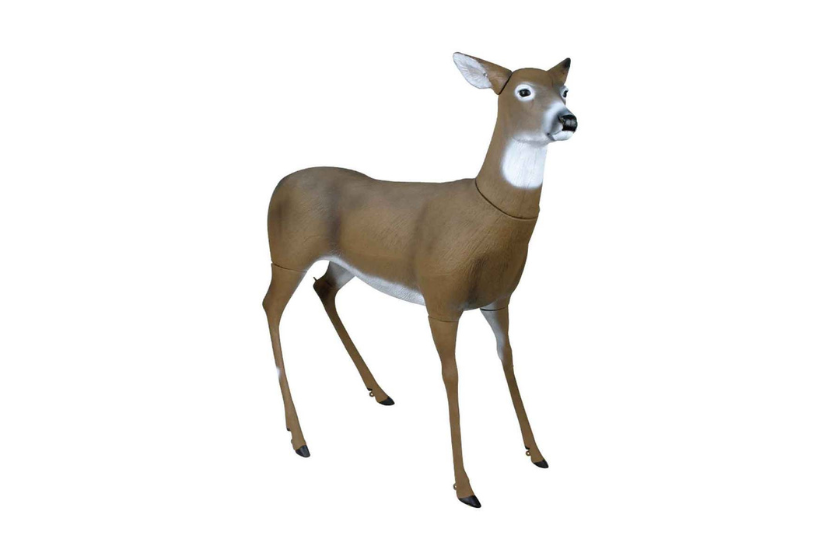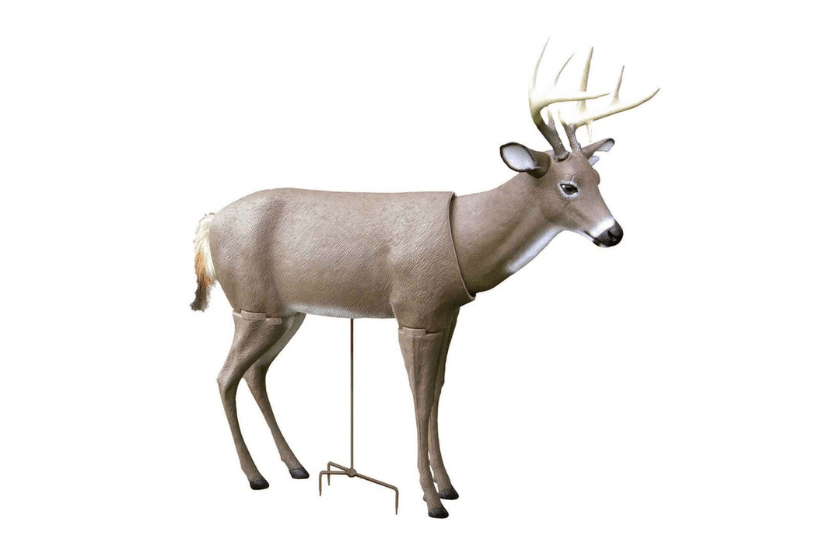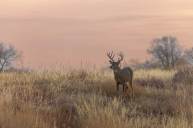When deer are running everywhere during the sacred month of November, a decoy might just bring them within shooting range. Unfortunately, using a deer decoy can be a little tricky and intimidating for first time users. Plenty of whitetail hunters have never even tried a decoy, but setting one up can be worth its weight in gold. If you're new to the decoy game, here are a few strategies and tips for your first time.
When to Use Deer Decoys
Timing is everything with deer hunting, and the same can be said for decoy use. If you put up a decoy in the middle of September, you probably won't see much of a reaction. Using decoys only works well when deer are more aggressive. That is why you want to use a decoy during the pre-rut and full-rut phases. During the pre-rut, bucks are figuring out their home ranges and have just broken up from their bachelor groups. They may not take kindly to another buck, and you can use that to your advantage. That is why I like to use buck decoys instead of does. Playing on a buck's aggression is often more successful than trying to fool him into chasing a fake doe in heat.
During the full rut, this aggression is amplified. Bucks are chasing does hard, and they do not want any other bucks messing with what they see as their does. So if they see your buck decoy, they will certainly have something to say about it. Thousands of bucks die every year as a result of fighting with other bucks during the rut, which should show you that they are not afraid to square up with another buck—or in this case, your decoy.
Decoy Placement & Hunting Strategy
Boss Buck Master Series Buck Decoy - Sportsman's Warehouse, $159.99
The first tenet to abide by when you are placing a decoy is to make sure it is visible. Do not put it in or around a lot of brush, in a low part of the ground, or in a heavily wooded area. You want to make sure your decoy can be seen from a long way and that means that every stand location might not be suitable for a decoy. That's okay. Don't force it.
If you're committed, here's the strategy: Once you find a nice open spot, make sure you set your stand up within shooting range. You likely want to shoot a buck when he is near your decoy instead of on the way to it. This is because aggressive bucks will often try to flank an opponent or get a cheap shot in from the rear or his side. This is going to make the path a deer would take to your decoy more unpredictable. However, an aggressive deer will eventually wind up close to your decoy, so that's where you should plan your shot.
You also want to make sure you are setting up your decoy with that shot in mind. It is a good idea to face your decoy in the complete opposite direction of where you would prefer a buck to approach from. If your decoy is visible, you point your decoy in the right direction, and your stand is within shooting range, you should have a good chance at putting down that aggressive buck.
If you're using a decoy on the fly instead of planning out a whole stand location for it, you might have to bend the rules a little. If your spot is less than ideal, but it's all you have to work with, make sure that your decoy is as visible as possible, and that it is still within range. You should always be able to shoot a deer that is 5 to 10 yards farther away than your decoy. Otherwise, you could get a really nice buck that hangs out on the other side of your decoy just out of range because you thought he would come from a different direction.
Whether your setup is ideal or not, throwing in a little rattling or grunting could significantly help bring in a buck. Using a blind grunt every now and then is a good way to bring in deer that are just out of sight, and once they can see the decoy, a snort wheeze will add a new layer to the already aggressive situation. Rattling can have a similar effect, but you will want to stop rattling if you see a buck. He will know something is up if he still hears rattling but only sees a single buck standing still.
Scent Control for Decoys

The idea is for deer to get close to your decoy. So you know they are going to smell it, even if they are 50 yards away. You absolutely have to make sure that there are not any human smells on your decoys. Most are made of plastic or rubber, and those materials can soak up plenty of scent and hold it on their surfaces if you don't take a few precautions.
The best scent control policy is avoidance. Avoid touching your decoy with your bare hands, and avoid keeping it inside or close to things like four-wheelers and weed eaters in your shed. Give it its own space and bag. Before your hunt, leave your decoy outside for a week or more. This should get rid of a lot of its scent, but sometimes not all. You should also spray it down with a scent eliminating spray, just like you would do to yourself. Deer are not scentless, though, and a buck would not expect your decoy not to have some sort of smell. You can add a bit of doe urine to your decoy too, or the tarsal glands from a previously harvested deer.
You also want to make sure that you place your decoy upwind of you so that when a deer gets close to it your scent isn't blowing into him. Keep in mind that the wind will change while you are sitting in the stand for multiple hours, so make sure you still practice a solid scent control routine.
Buck vs. Doe Decoy
Like I mentioned before, I like to play on a buck's aggression so I use another buck decoy. This works well in most situations during the early and full rut when bucks are already tending does. If bucks are not quite locked onto does yet, you could try using a doe decoy. Just be ready to shoot, because if they start chasing your decoy, it will be over in a hurry and they may spook after they run it over.
Decoy Options
Primos Scar Deer Decoy - Sportman's Warehouse, $199.99
In general, you will want to get a 3D decoy. In my opinion, one of the best 3D buck decoys out there is the Primos Scar decoy. Its neck and tail sway in the wind so it is not completely still. This is about as lifelike as you are going to get out of a deer decoy. If you want to save a few dollars but still get a 3D decoy, the Boss Buck Master decoy works well, but it does not move. 3D doe decoys are also available.
There are a few different 2D decoys you can get, but they are a little harder to use in my opinion. They are good if you are hunting in a field, or want to use multiple decoys. They are also much cheaper, and easier to transport. Either way, you certainly have options and should definitely try out a deer decoy without a huge investment. Ideally, you will learn something new and hopefully bag a nice buck in the process.









